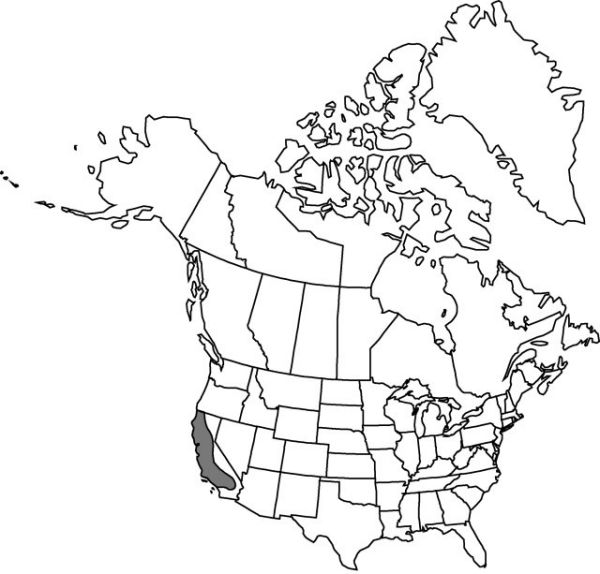Difference between revisions of "Triteleia laxa"
Trans. Hort. Soc. London, ser. 2, 1: 413, plate 15, fig. 2. 1835.
FNA>Volume Importer |
FNA>Volume Importer |
||
| Line 12: | Line 12: | ||
|name=Brodiaea candida | |name=Brodiaea candida | ||
|authority=(Greene) Baker | |authority=(Greene) Baker | ||
| − | }}{{Treatment/ID/Synonym | + | }} {{Treatment/ID/Synonym |
|name=Brodiaea laxa | |name=Brodiaea laxa | ||
|authority=(Bentham) S. Watson | |authority=(Bentham) S. Watson | ||
| − | }}{{Treatment/ID/Synonym | + | }} {{Treatment/ID/Synonym |
|name=Brodiaea laxa var. candida | |name=Brodiaea laxa var. candida | ||
|authority=(Greene) Jepson | |authority=(Greene) Jepson | ||
| − | }}{{Treatment/ID/Synonym | + | }} {{Treatment/ID/Synonym |
|name=Brodiaea laxa var. nimia | |name=Brodiaea laxa var. nimia | ||
|authority=Jepson | |authority=Jepson | ||
| − | }}{{Treatment/ID/Synonym | + | }} {{Treatment/ID/Synonym |
|name=Brodiaea laxa var. tracyi | |name=Brodiaea laxa var. tracyi | ||
|authority=Jepson | |authority=Jepson | ||
| − | }}{{Treatment/ID/Synonym | + | }} {{Treatment/ID/Synonym |
|name=Hookera laxa | |name=Hookera laxa | ||
|authority=Borzí | |authority=Borzí | ||
| − | }}{{Treatment/ID/Synonym | + | }} {{Treatment/ID/Synonym |
|name=Milla laxa | |name=Milla laxa | ||
|authority=A. Heller | |authority=A. Heller | ||
| − | }}{{Treatment/ID/Synonym | + | }} {{Treatment/ID/Synonym |
|name=Seubertia laxa | |name=Seubertia laxa | ||
|authority=Greene | |authority=Greene | ||
| − | }}{{Treatment/ID/Synonym | + | }} {{Treatment/ID/Synonym |
|name=Seubertia obscura | |name=Seubertia obscura | ||
|authority=unknown | |authority=unknown | ||
| − | }}{{Treatment/ID/Synonym | + | }} {{Treatment/ID/Synonym |
|name=Triteleia angustiflora | |name=Triteleia angustiflora | ||
|authority=unknown | |authority=unknown | ||
| − | }}{{Treatment/ID/Synonym | + | }} {{Treatment/ID/Synonym |
|name=Triteleia candida | |name=Triteleia candida | ||
|authority=unknown | |authority=unknown | ||
| Line 57: | Line 57: | ||
|elevation=0–1500 m | |elevation=0–1500 m | ||
|distribution=Calif. | |distribution=Calif. | ||
| − | |discussion=<p>Triteleia laxa is very common at low altitudes in central California, growing under a variety of ecological conditions, with wide attendant variation, especially in flower size. It could be considered a species complex (like T. ixioides) made up of many forms, with consistent differences in chromosome number and in the size and shape of the anthers (M. P. Burbanck 1944). The flowers can be quite large or small, and usually are pale blue, but sometimes are white or deep bluish purple. These morphologies often intergrade, making it difficult to recognize formal varieties.</p><!-- | + | |discussion=<p><i>Triteleia laxa</i> is very common at low altitudes in central California, growing under a variety of ecological conditions, with wide attendant variation, especially in flower size. It could be considered a species complex (like <i>T. ixioides</i>) made up of many forms, with consistent differences in chromosome number and in the size and shape of the anthers (M. P. Burbanck 1944). The flowers can be quite large or small, and usually are pale blue, but sometimes are white or deep bluish purple. These morphologies often intergrade, making it difficult to recognize formal varieties.</p><!-- |
--><p>This species may occur in southwestern Oregon, but documentation of its presence there is lacking.</p><!-- | --><p>This species may occur in southwestern Oregon, but documentation of its presence there is lacking.</p><!-- | ||
| − | --><p>Triteleia ×tubergenii L. W. Lenz is a cultivated amphidiploid hybrid between T. laxa and T. peduncularis (L. W. Lenz 1970).</p> | + | --><p><i>Triteleia</i> ×tubergenii L. W. Lenz is a cultivated amphidiploid hybrid between <i>T. laxa</i> and <i>T. peduncularis</i> (L. W. Lenz 1970).</p> |
|tables= | |tables= | ||
|references= | |references= | ||
| Line 83: | Line 83: | ||
|publication year=1835 | |publication year=1835 | ||
|special status= | |special status= | ||
| − | |source xml=https://jpend@bitbucket.org/aafc-mbb/fna-data-curation.git/src/ | + | |source xml=https://jpend@bitbucket.org/aafc-mbb/fna-data-curation.git/src/8f726806613d60c220dc4493de13607dd3150896/coarse_grained_fna_xml/V26/V26_702.xml |
|genus=Triteleia | |genus=Triteleia | ||
|species=Triteleia laxa | |species=Triteleia laxa | ||
Revision as of 16:46, 18 September 2019
Leaves 20–40 cm × 4–25 mm. Scape 10–70 cm, smooth or scabrous near base. Flowers: perianth usually pale blue, sometimes deep bluish purple or white, 18–47 mm, tube attenuate at base, 12–25 mm, lobes gradually spreading, 8–20 mm; stamens attached alternately at 2 levels, horizontal and curved upward at apex, nearly equal; filaments linear, 3–6 mm, apical appendages present near base of adnate portion of filaments, membranous; anthers white to bluish, 2–5 mm, apex blunt to tapered; ovary 1/3–1/2 as long as stipe, either central or along proximal side of flower; pedicel ascending or spreading, often bent at apex, 1–10 cm. 2n = 16, 18, 28 (30), 32, 42, 48.
Phenology: Flowering spring (Apr–Jun).
Habitat: Open forests, mixed conifer or foothill woodlands, grasslands on clay soil
Elevation: 0–1500 m
Discussion
Triteleia laxa is very common at low altitudes in central California, growing under a variety of ecological conditions, with wide attendant variation, especially in flower size. It could be considered a species complex (like T. ixioides) made up of many forms, with consistent differences in chromosome number and in the size and shape of the anthers (M. P. Burbanck 1944). The flowers can be quite large or small, and usually are pale blue, but sometimes are white or deep bluish purple. These morphologies often intergrade, making it difficult to recognize formal varieties.
This species may occur in southwestern Oregon, but documentation of its presence there is lacking.
Triteleia ×tubergenii L. W. Lenz is a cultivated amphidiploid hybrid between T. laxa and T. peduncularis (L. W. Lenz 1970).
Selected References
None.
